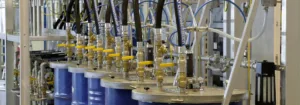The transportation sector is undergoing a significant shift towards electrification. While electric motors have become the dominant force for powering land vehicles, integrating them with traditional air-breathing combustion engines presents unique challenges. This hybrid approach, combining the power and range of jet engines with the efficiency and low emissions of electric motors, holds immense potential for the future of aviation. However, achieving seamless integration necessitates overcoming several hurdles in design, thermal management, and control systems.
Why Integrate? The Allure of Hybrid Propulsion
Integrating air-breathing and electric motors offers a compelling solution for next-generation aircraft. Here’s why:
- Reduced Emissions: Electric motors are inherently cleaner, producing minimal pollutants compared to jet engines. This is crucial for mitigating the environmental impact of aviation on climate change.
- Fuel Efficiency: Electric motors boast superior efficiency, particularly during takeoff and landing, the most fuel-intensive phases of flight. This translates to lower operating costs and extended range.
- Noise Reduction: Electric motors operate significantly quieter than jet engines, leading to less noise pollution for communities around airports.
- Improved Maneuverability: Electric motors can provide instant torque, enabling more precise control and improved agility for aircraft, especially during takeoff and landing.
The Hurdles: Challenges in Hybrid Propulsion
Despite these advantages, integrating air and electric motors presents significant challenges:
- Weight and Power Density: Electric motors, while efficient, are currently heavier and bulkier compared to jet engines for the same amount of power output. This adds weight to the aircraft, impacting range and fuel efficiency. New battery and motor technologies with higher power density are crucial for overcoming this hurdle.
- Thermal Management: Integrating two distinct power sources with contrasting thermal profiles creates complexities. Jet engines operate at high temperatures, while electric motors perform optimally at cooler temperatures. Designing a system that efficiently manages heat dissipation from both sources without compromising performance is a significant challenge.
- Battery Technology: Current battery technology presents limitations in terms of energy density and charging time. Hybrid electric aircraft require batteries with high energy density to provide sufficient range, yet charging them quickly enough for frequent flights remains a challenge. Advancements in battery technology are essential for widespread adoption of hybrid propulsion.
- Control System Complexity: Integrating two different power sources necessitates a sophisticated control system. This system must seamlessly manage the interplay between the air-breathing engine and the electric motor, optimizing power delivery for various flight phases. Additionally, ensuring smooth transitions between electric and jet propulsion without compromising safety or performance is crucial.
- Certification and Regulations: Integrating a novel hybrid propulsion system necessitates navigating a complex web of aviation regulations and certification processes. Safety and reliability are paramount, and regulators will require extensive testing and data to ensure the airworthiness of these new systems.
Solutions and Future Directions
Despite the challenges, significant research and development efforts are underway to address these limitations:
- Advanced Battery Technologies: Solid-state battery technology has the potential to offer significantly higher energy density compared to current lithium-ion batteries. This could lead to longer range capabilities for hybrid electric aircraft.
- Lightweighting Materials: Utilizing advanced composite materials for airframes and components can help reduce weight, offsetting the weight of electric motors and batteries.
- Thermal Management Systems: Developing innovative cooling systems that can effectively manage the heat generated by both power sources is critical. Thermal transfer loops and advanced heat exchangers are being explored to address this challenge.
- Advanced Control Systems: Developing intelligent control systems capable of optimizing power delivery and ensuring smooth transitions between electric and jet propulsion is essential.
Looking Ahead: The Road to Hybrid Skies
Integrating air and electric motors for hybrid propulsion in aviation is a complex undertaking. However, the potential benefits in terms of reduced emissions, improved fuel efficiency, and quieter operation are undeniable. Overcoming the technical challenges through continuous research and development in battery technology, thermal management, control systems, and lighter materials will pave the way for the future of cleaner and more sustainable air travel. While there are hurdles to overcome, the potential rewards are significant, and the journey towards hybrid skies has begun.
Additionally, here are some areas for further exploration:
- Hybrid-Electric Architectures: Different configurations exist for integrating air and electric motors, such as series hybrid, parallel hybrid, and turboelectric. Researching the most efficient and adaptable architectures for various aircraft types is crucial.
- Ground-based Charging Infrastructure: Developing efficient and rapid charging infrastructure for electric aircraft at airports is necessary for widespread adoption of hybrid technology.
By addressing these challenges and continuing technological advancements, we can move closer to a future where hybrid-electric aircraft grace the skies, offering cleaner, quieter, and more sustainable air travel.
For further insights and detailed technical information, consult the Pocket Guide to Air Motors by Atlas Copco or Contact us directly.


